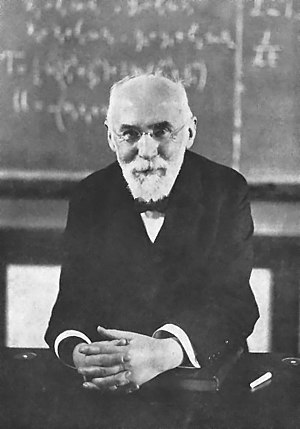A Foundation for Modern Physics
Introduction
Hendrik Lorentz (1853-1928) A Dutch physicist whose profound contributions to electromagnetism and optics laid the groundwork for some of the most revolutionary theories of the 20th century. His work on electromagnetic theory, the electron theory, and the derivation of the transformation equations proved to be of immense importance to later physicists, including Albert Einstein.

Early Life and Education
Hendrik Antoon Lorentz was born in Arnhem, Netherlands, on July 18, 1853. He demonstrated exceptional intellectual abilities from a young age. He studied mathematics and physics at the University of Leiden, where he was deeply influenced by the works of James Clerk Maxwell and Hermann von Helmholtz. Lorentz graduated with a bachelor’s degree in mathematics and physics in 1870. In 1875, he earned his doctorate from Leiden with a thesis on the reflection and refraction of light, which further developed the electromagnetic theory of light.
Academic Career and Contributions
In 1878, at the young age of 24, Lorentz was appointed Professor of Theoretical Physics at the University of Leiden, a position he held for nearly four decades. He quickly established himself as a leading figure in the scientific community.
- Electromagnetic Theory: Lorentz expanded upon Maxwell’s electromagnetic theory, providing a more comprehensive explanation of the nature of light and its interaction with matter. He introduced the concept of the electron as a charged particle within atoms, which became a cornerstone of modern physics.
- Electron Theory: Lorentz developed the electron theory, which explained optical and electrical phenomena in terms of the behavior of electrons within materials. This theory provided a microscopic foundation for macroscopic electromagnetic phenomena.
- Zeeman Effect: Lorentz’s theoretical work on the interaction of light and magnetism predicted the splitting of spectral lines in a magnetic field. This phenomenon, known as the Zeeman effect, was experimentally discovered by his student Pieter Zeeman in 1896. Lorentz provided the theoretical explanation for this effect, which confirmed his electron theory and the connection between light and magnetism.
- Lorentz Transformations: Perhaps Lorentz’s most significant contribution was the derivation of the Lorentz transformation equations. These equations describe how space and time coordinates transform between observers moving at constant relative velocities. While developed within the context of the luminiferous aether theory, these transformations later became a fundamental component of Einstein’s special theory of relativity.
The Lorentz Force
Lorentz also formulated the concept of the Lorentz force, which describes the combined electric and magnetic force acting on a charged particle moving in an electromagnetic field. The Lorentz force equation is given by:
F = qE + qv × B
Where:
- F is the force experienced by the charge.
- q is the magnitude of the charge.
- E is the electric field.
- v is the velocity of the charge.
- B is the magnetic field.F is the force experienced by the charge.
This equation is fundamental to understanding the behavior of charged particles in electromagnetic fields and has numerous applications in physics and engineering.
Lorentz Invariance
Lorentz invariance is a fundamental symmetry of nature, stating that the laws of physics remain the same for all observers moving at constant velocities relative to each other (i.e., in inertial frames of reference). This concept, rooted in special relativity, implies that experimental results are independent of the orientation or the boost velocity of the laboratory through space. Lorentz invariance is a cornerstone of modern physics, including special relativity and quantum field theory.
Nobel Prize and Legacy
In 1902, Lorentz and Pieter Zeeman were awarded the Nobel Prize in Physics for their discovery and theoretical explanation of the Zeeman effect. This recognition solidified Lorentz’s position as one of the leading physicists of his time.
Lorentz’s influence extended beyond his specific discoveries. He was highly respected by his peers and played a crucial role in fostering international scientific collaboration. As the Nobel Foundation stated, “It may well be said that Lorentz was regarded by all theoretical physicists as the world’s leading spirit, who completed what was left unfinished by his predecessors and prepared the ground for the fruitful reception of the new ideas based on the quantum theory.” From 1925 until his death, he served as Chairman of the International Committee on Intellectual Cooperation.
Lorentz’s work on the transformation equations was particularly significant. Although initially developed within the framework of classical physics, these equations were later adopted by Albert Einstein as a cornerstone of his special theory of relativity, revolutionizing our understanding of space, time, and the relationship between them.
Hendrik Lorentz’s contributions to physics were profound and far-reaching. He not only made groundbreaking discoveries but also provided the theoretical framework that paved the way for the development of relativity and quantum mechanics, shaping the course of 20th-century physics.
